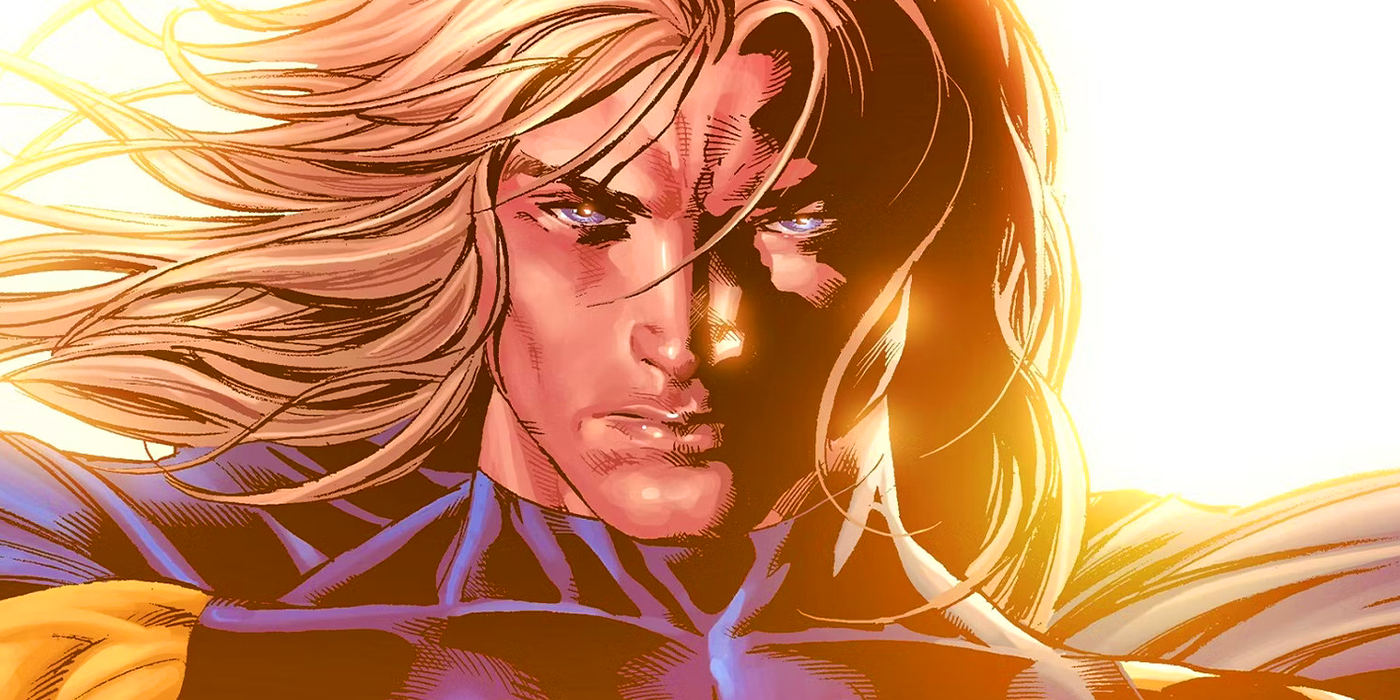The Sentry is often regarded as Marvel Comics’ version of Superman, but according to co-creator Paul Jenkins, the character actually started life as a pitch for another DC Comics hero.
Released in 2000, The Sentry was a Marvel Knights series by Paul Jenkins and Jae Lee that told the story of a powerful superhero who had been forgotten by the rest of the Marvel Universe. Originally presented as a lost creation of Stan Lee from the 1960s, the series garnered controversy upon release, and is widely considered one of the greatest hoaxes in comic book history. Recently, co-creator Paul Jenkins spoke at the 2023 Dragon Con panel “Marvel’s Sentry: A Superhero Identity Crisis,” where the writer revealed that the Sentry originally began life as a pitch at DC Comics for an entirely different hero: Hourman.
Marvel’s Sentry Originally Started As A Pitch For DC’s Hourman
“Originally, the pitch was for Karen Berger at Vertigo for Hourman,” Jenkins says, “and was about a superhero dealing with addiction.” First appearing in1940’s Adventure Comics #48 by Ken Fitch and Bernard Baily, Rex Tyler gained an hour of superpowers after taking the Miraclo pill, enabling him to battle crime as the costumed hero Hourman. Jenkins saw the character as the perfect way to explore issues of addiction and mental health, but Vertigo wasn’t interested. “Karen said they weren’t interested in doing superheroes at Vertigo at the time,” Jenkins explains, so the writer decided to turn the character into a new, original hero. After years of pitching it to both Marvel and DC, the story crossed the desk of Marvel Knights editors Joe Quesada and Jimmy Palmiotti, who decided to give The Sentry the greenlight following the success of Jenkins’ earlier series with Jae Lee, Inhumans.
“The Big Lie” by Christopher Lawrence, which appeared in Wizard: The Guide to Comics #116, gives further context to Jenkins’ original pitch. “He had these pills that made him into a superhero for one hour – talk about the biggest rush in history,” Jenkins says in the article, “Hourman would be great to write as an addicted hero.” It’s wild to think that the Sentry started out as a pitch for an entirely different character at another company, but the final series still reflects Jenkins’ original vision of a hero dealing with addiction. The Sentry’s alter ego Robbie Reynolds gains his powers from a special serum, which he keeps hidden away to protect the world from his dangerous powers. The scenes of a now middle-aged Reynolds attempting to hide his serum usage from his wife Lindy give the series an added reality and depth, pushing The Sentry into realms far outside what is typically seen in a Marvel superhero comic.
“The Biggest Rush In History” – The Sentry Struggles With Addiction
Even though it wasn’t published by Vertigo, the first Sentry series definitely feels like the type of dark character study that the famed imprint excelled at. Jae Lee’s moody artwork enhances that tone throughout, making the series feel more like a dramatic thriller as opposed to a story devoted to superhero punch-ups. Even though he started life as a pitch for DC’s Hourman, Marvel’s Sentry still handles the subject of addiction with aplomb.
Sources: “Marvel’s Sentry: A Superhero Identity Crisis,” Dragon Con 2023; “The Big Lie” by Christopher Lawrence, Wizard: The Guide to Comics #116
Marvel’s Superman? Think again… Read More

